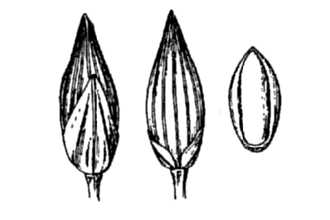Panicum filipes Scribn.
Scientific Name: Panicum filipes Scribn.

| General Information | |
|---|---|
| Usda Symbol | PAFI7 |
| Group | Monocot |
| Life Cycle | Perennial |
| Growth Habits | Graminoid |
| Native Locations | PAFI7 |
Plant Guide
Use soil moisture sensors to measure the soil moisture of Panicum filipes Scribn..
Fact Sheet
Alternate Names
Hall’s panicgrass, Filly panicum
Uses
Hall’s panicum [Panicum hallii Vasey var. filipes (Scribn.) Waller] is recommended for highway rights-of-way plantings because of its short stature. It also can provide plant diversity to rangeland plantings. Wildlife: Hall’s panicum provides only fair forage for wildlife. However, it is a good seed producer, and its seeds can provide a source of food for birds and other wildlife.
Status
Please consult the PLANTS Web site and your State Department of Natural Resources for this plant’s current status (e.g., threatened or endangered species, state noxious status, and wetland indicator values).
Description and Adaptation
Adaptation
Adaptation
Hall’s panicum is a short-lived, native, warm season, perennial bunchgrass with stiffly erect stems. Mature foliage height ranges from 0.5 to 2.5 feet. Leaves are mostly in a basal clump, curling with drying and age. The inflorescence is an open panicle with a pinkish or purplish tint. Hall’s panicum grows on sandy to clayey calcareous soils. It will tolerate soils that are weakly saline. Its natural range extends from Oklahoma south into Mexico, east to Louisiana, and west to Arizona. Hall’s panicum var. filipes distribution from USDA-NRCS PLANTS Database. For updated distribution, please consult the Plant Profile page for this species on the PLANTS Web site.
Establishment
Seedbed preparation should begin well in advance of planting. Planting can be scheduled for early spring, or where there are few cool-season weeds Hall’s panicum can be planted in the fall. Establish a clean, weed-free seedbed by either tillage or herbicides. Prior to planting, the site should be firm and have accumulated soil moisture. Hall’s panicum is best seeded using a grass drill to ensure a good planting of the small seed. Broadcast seeding may be used in areas not easily planted with a drill, but some type of additional coverage such as culti-packing or light dragging will be beneficial to ensure good seed to soil contact. Seed should be planted 1/8 to 1/4 inch deep. It is better to plant too shallow than too deep. Soil analysis should be performed prior to planting to determine the necessary levels of nitrogen, phosphorus and potassium. Nitrogen should not be applied until the stand is established. If one plant per square foot has become established than the planting has been successful. Oso Germplasm Hall’s panicum plants in a seed increase field. Photo by Shelly Maher, STPMC, Kingsville, TX.
Management
Hall’s panicum should not be grazed the first year, After a stand is established, either continuous or rotational grazing can be used, Use soil moisture sensors to measure the soil moisture of Panicum filipes Scribn.., Contact your local USDA-NRCS field office for assistance in planning and applying prescribed grazing, Plants should be allowed to produce seed each year because of the short-lived nature of the plant,
Pests and Potential Problems
Control of pests may be necessary in order to produce seed crops in dry years under irrigation.
Environmental Concerns
There are no known environmental concerns associated with Hall’s panicum. Cultivars, Improved, and Selected Materials (and area of origin) Oso Germplasm Hall’s panicum is a selected plant material cooperatively released in 2011 with Texas A&M University-Kingsville, Caesar Kleberg Wildlife Research Institute, South Texas Natives. It is a blend comprised of two natural populations of Hall’s panicum collected in the South Texas Counties of Nueces and Cameron. It is a selected plant material class of certified seed (natural track). These two populations were chosen for release from comparisons of twenty-nine collections. The selected accessions have superior active seed germination, greater overall seed production, and higher plant vigor ratings than other collections evaluated. No intentional breeding, selection or genetic manipulation was carried out within these populations. For calibration purposes, Oso Germplasm hall’s panicum contains approximately 855,566 seeds per bulk pound. A seeding rate of 1 pound of pure live seed (PLS) per acre is recommended. In planting mixtures reduce the rate according to the percent of Hall’s panicum in the mixture.
Prepared By
John Lloyd-Reilley and Shelly Maher, USDA-NRCS, E. “Kika” de la Garza Plant Materials Center, Kingsville, Texas
